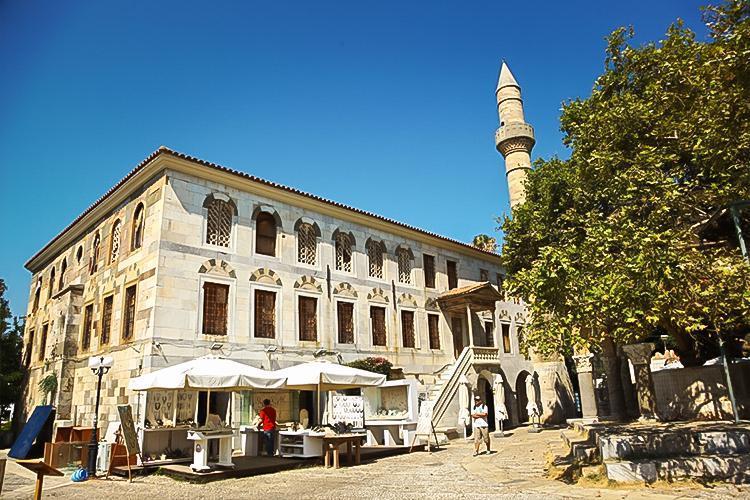
t was first registered by the Greek Ministry of Culture on September 15, 1948 and then on October 5, 2001. It was built in 1776 by Cezayirli Gazi Hasan Pasha. This beautiful two-storey mosque, sitting on the arches, is reached by a staircase. There is a moon-star badge on the ceiling of the porch in front of the gate. The rectangular mosque has a roof. Harimi is passed from the place of the last congregation, whose wooden ceiling was destroyed. In the courtyard of the mosque, next to the Hippocrates plane, there is a beautiful six-cornered fountain with its dome placed on six marble columns, which will attract attention immediately. Cypress trees are embroidered on each side of the fountain's twelve-faced marble water tank. The mosque, which is in ruins today, is closed to worship.
